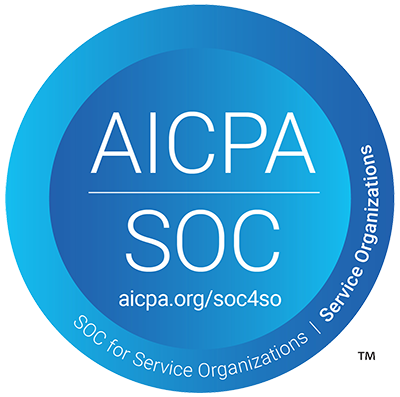Harm reduction
No matter why someone is using substances, they deserve to be treated with human dignity and respect. If they don’t want to, aren’t ready to, or aren’t able to stop using substances, it’s possible and ethically vital to make things safer for them.
That’s what harm reduction is all about.
What is harm reduction?
Harm reduction is an umbrella term that describes a set of practices for people who use drugs (including alcohol) and those in recovery. At its core, harm reduction is exactly what it says: reducing harm and limiting damage.
Many people assume that the damage from illicit drug use is inevitable, but much of it can be reduced or mitigated.
Harm reduction has gained popularity in recent years as the recovery movement has begun to explore more pathways of recovery. It is often seen as a risk-reducing approach to help people who use substances but are unable to quit or uninterested in abstaining completely.
Why do we need harm reduction?
Harm reduction saves lives and can also improve the quality of life. It’s widely accepted that using alcohol and illicit drugs can be deadly. But with a harm reduction approach, many of those deaths can be avoided.
For example, there is a rescue medication (naloxone, brand name Narcan) that can reverse opioid overdose. Tens of thousands of lives can saved if this medication becomes more widely available and understood.
Having a designated driver is a popular harm-reduction strategy for limiting the danger of drinking, and there are other options as well.
For example, medication-assisted treatment for alcohol is available to help people reduce and moderate the amount they drink, which could save some of the 95,000 Americans who die from excessive alcohol use each year.
Harm reduction in everyday life
- Wearing helmets and pads to reduce sports injuries.
- Protecting hands with pot-holders and oven mitts to lower the risk of burns.
- Using seatbelts to cut down on injuries and fatalities from car accidents.
- Putting on sunblock to reduce skin damage from the sun’s rays
- Applying antibacterial ointment and bandages to small cuts to promote healthy healing.
- Stretching before and after exercise to limit the danger to muscles and ligaments.
- Having railings beside stairs to lower the risk of falling.
- Washing hands and covering coughs to reduce the likelihood of spreading infection socially.
Harm reduction for substance use
Believe it or not, all types of recovery and treatment programs fit onto the spectrum of harm reduction, because they are all aimed at diminishing the damage and danger of substance use. While we often think of the harm reduction model as being for people who don’t want to seek abstinence, abstinence itself is a form of harm reduction. So are many other initiatives and interventions, including:
Medication-assisted treatment
Treatment of opioid use disorder with buprenorphine (including Suboxone), methadone, or naltrexone, and treatment of alcohol use disorder with naltrexone or acamprosate.
Managed use
Safe-syringe programs and needle exchanges that reduce the transmission of infectious diseases (like HIV and hepatitis) by providing sterile syringes, overdose reversal kits including naloxone (Narcan), drug-checking programs that can help determine whether a drug supply has been adulterated, medical care, sharps containers, the use of naltrexone to moderate alcohol use and alcohol-related problems.
Safe injection sites
A safe place to use substances and access services to reduce the risks of using alone. Even without medical supervision, the presence of a person who is able to call emergency services or administer naloxone or CPR is life-saving.
Treatment instead of criminal justice
In drug courts, people defendants with substance use disorders are offered help to find treatment as an alternative to incarceration.
What are the principles of harm reduction?
The Harm Reduction Coalition considers the following foundational principles to be central to the understanding and use of the term “harm reduction.”
The history of harm reduction
Harm reduction as a phrase arose out of several other social justice movements in the 1960s-1980s, including the Black Panther survival programs, the women’s health movement, and grassroots activism around the AIDS crisis. The harm reduction movement was formed in order to protect and promote the rights of people who use drugs and reduce stigma towards those people.
The Harm Reduction Coalition describes this work as arising from the experience of using substances, the loss of loved ones, professional experience, and exposure to criminal justice and injustice.
At its essence, harm reduction is a movement that seeks to overcome the stigma and criminalization associated with drug use and instead promote the humanity and full potential of people who use drugs, which have always been diminished as morally corrupt and less than. Addiction is not a moral failing.
Host Olivia Pennelle, Tracey Helton, MPA, Haven Wheelock, MPH, and Elizabeth Brico, MFA came together to discuss harm reduction, how it has been framed by the recovery movement, and the broad spectrum of services that facilitate harm reduction.
Our members set their own recovery goals
How we're different:
- We're founded and operated by people in recovery
- Our judgment-free clinicians won't remove you from the program for going off course
- We've helped 20k+ people since 2015
- We treat you as a whole person, including co-occurring conditions like anxiety, depression, insomnia, and more
- Our members are part of a close-knit, online community with weekly support groups and private online forums
- Our treatments are evidence-based and backed by science





